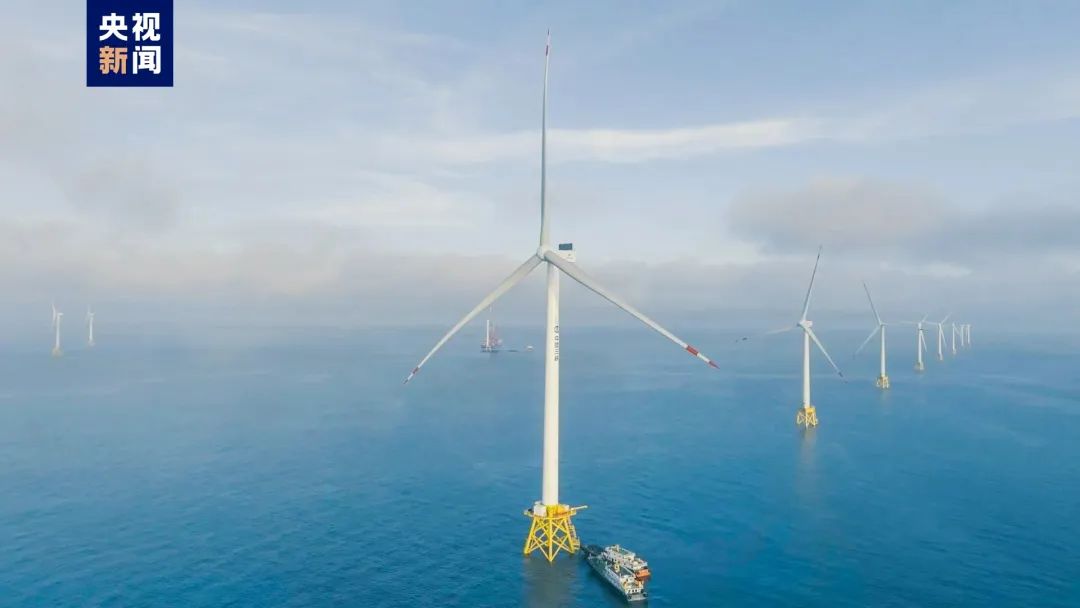Pingtan offshore wind farm connects world's largest wind turbine to grid
en.ptnet.cn | Updated:2023-07-24 | Lin Kongbo, Stephanie
On July 19, the world's first 16 megawatts (MW) capacity offshore wind turbine was successfully connected to the grid and began generating power at the offshore wind farm of Pingtan in Fujian province of east China. This achievement marks a breakthrough in the core technology of the offshore wind power industry's supply chain, specifically in equipment localization and industrialization. The project is deemed an upgrade of the offshore wind power industry, a significant ascension for the industry's aptitude and China's trajectory in sustainable green energy.
The 16 MW offshore wind turbine is located about 35 kilometers from the Fujian coast, with the hub center of the turbine at a height of 152 meters above the sea, equivalent to the height of a 50-story building. The blade diameter is 252 meters, with a swept area of about 50,000 square meters, equivalent to seven standard football fields. The length of each blade is 123 meters, and it can simultaneously accommodate 300 adults standing shoulder to shoulder.
All core key components of this offshore wind turbine, including the main shaft bearing, have achieved 100% localization. The main shaft bearing is the core component of the wind turbine, and once it fails, the blade will be unable to rotate. The reliability of the main shaft bearing is a common problem faced by all offshore wind turbines, especially the onesin the open sea. Maintenance and replacement of the bearing is almost equivalent to rebuilding the entire turbine. In the industry, the average service life of the main shaft bearing for offshore wind turbines is 20 years, while the 16 MW offshore wind turbine has achieved product design and manufacturing innovation, extending the service life to 25 years.
When the sea breeze blows and rotates the blades, the generator inside the nacelle generates electricity, converting wind energy into electrical energy. At this point, the voltage is very low and cannot meet the requirements for a grid connection. Therefore, the electricity is sent to the offshore booster station for voltage boosting through an undersea cable. The offshore booster station is like the heart of the human body, gathering all the electrical energy and boosting it to 220 kilovolts before sending it to the grid via the undersea cable.
The construction process of laying the undersea cable is similar to sowing wheat. The construction vessel uses a plow to bury the cable in a 2-3 meter deep cable trench on the seabed and then buries it. According to estimates, under rated operating conditions, each rotation of the turbine can generate about 34 kilowatt-hours of electricity, and on average, it can generate 66 million kilowatt-hours of clean energy per year, which can meet the normal electricity consumption needs of 36,000 three-person households for one year.
Spotted a mistake or want to add something? All rights reserved. Do not reproduce our content without permission–you can contact us directly on our Twitter mailbox. Follow @pingtanchina (Twitter)

 Fujian Public Security Registration Code: 35012802000271
Fujian Public Security Registration Code: 35012802000271